Poletown East’s St. Stanislaus Church Could Be Demolished


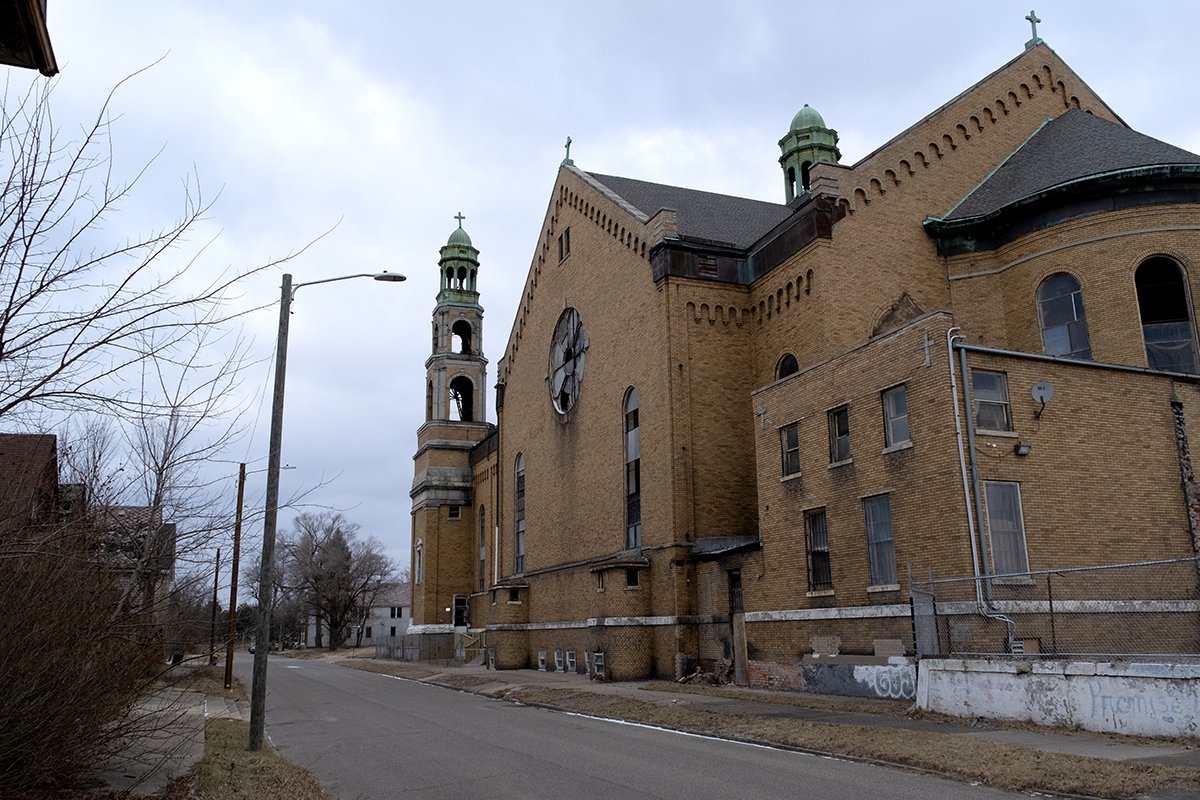

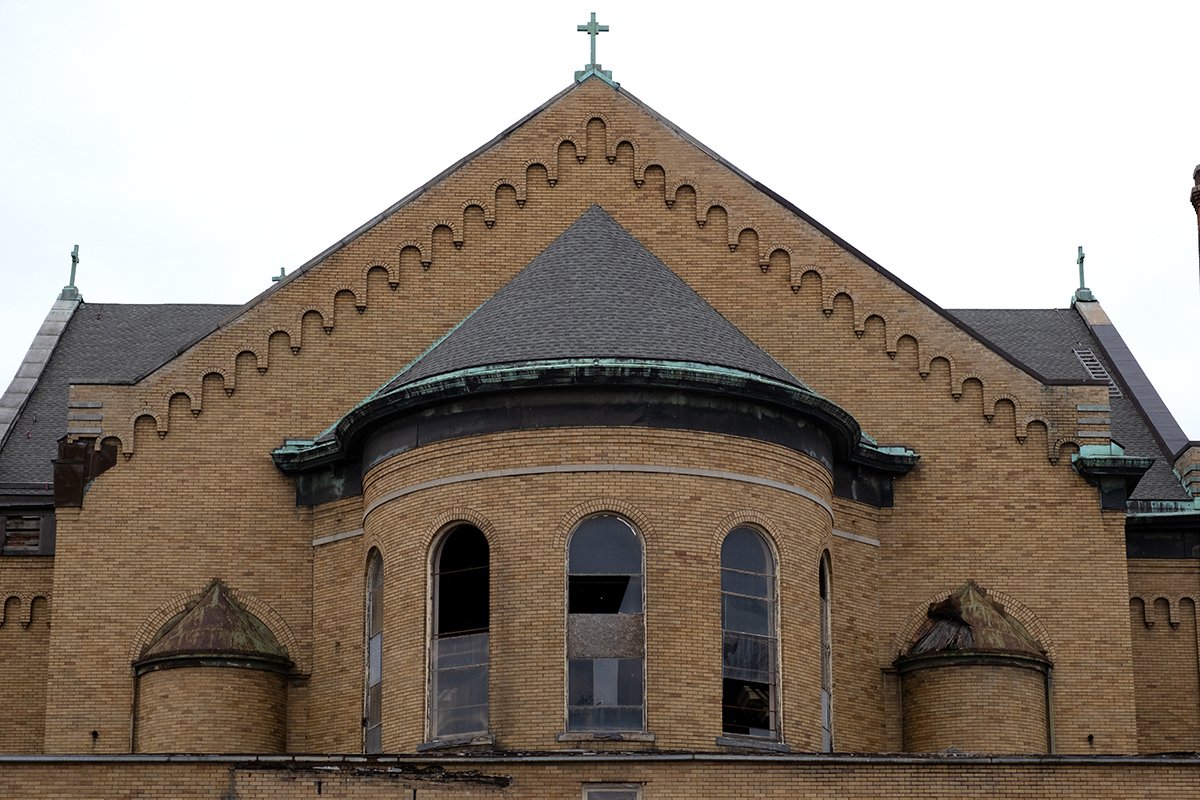
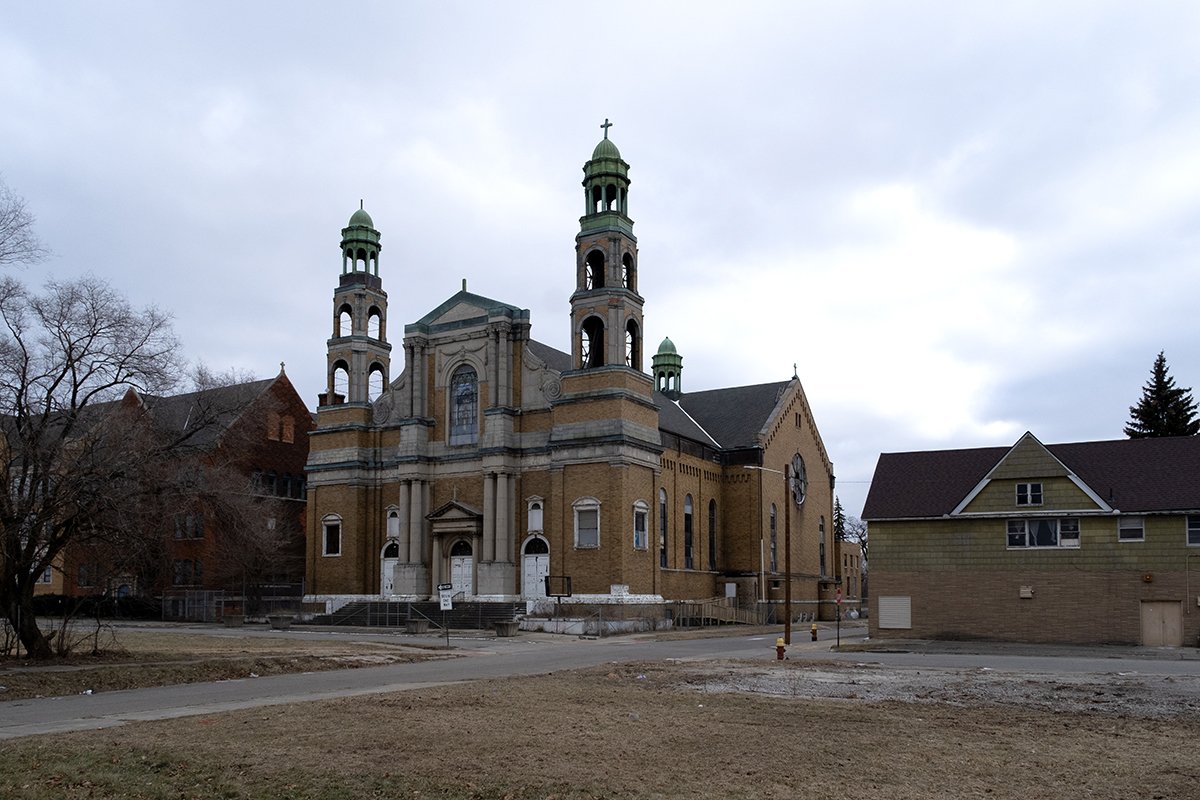
St. Stanislaus Bishop and Martyr Roman Catholic Church has been a Detroit landmark since its opening in 1913. The Harry J. Rill-designed church served a swelling Polish population for decades and, for a time, had the largest Polish parochial school in Michigan.
However, for the past few decades, St. Stanislaus has been known for different reasons, deteriorating in plain sight for anyone passing through the I75/I94 Interchange to see.
Detroit Free Press, August 18, 1913
After a battle between the parish and the archdiocese, the Roman Catholic Church held its last services in July 1989. After the closure, it was sold to local organist Samuel Koontz. With the musician’s help, the structure was made a Detroit Historic District in December 1990, offering both the interior and exterior protection from demolition and irresponsible remodeling.
Koontz planned to use the structure to restore pipe organs.
To properly do his work, he needed a church to ensure the sound was carrying correctly. Additionally, he planned to use the church to host events.
Unfortunately, those plans were laid to rest with Koontz when he died in 1992 at 34. Koontz, hailing from Ohio, didn’t have any family in the area or any that planned to relocate to Detroit. So, his estate hastily tried to find a buyer for the complex, finally selling the church and rectory to Promise Land Missionary Baptist Church in 1995.
Detroit Free Press, September 26, 1992
Promise Land soon found themselves struggling to maintain the church. Because the exterior and interior were designated by the Detroit City Council’s Historic Designation Advisory Board, all changes had to be approved by the Historic District Commission. Promise Land MBC asked permission to sell internal fixtures and stained glass to help them stay afloat; however, the board refused.
In the opinion of many involved, Promise Land shouldn’t have purchased the structure if they weren’t prepared to maintain it. Even in the modern internet age, many don’t understand the responsibilities assumed when purchasing a locally designated structure. Though the restrictions are in place for a reason, it can be frustrating if a property owner isn’t made aware of the details before closing on a building.
Detroit Free Press, October 23, 1998
Promise Land MBC went against the ruling of the Historic Designation Advisory Board and Historic District Commission and went on a selling spree. Everything was for sale, from decorative plaques to the altar and stained glass windows, helping the church stay open for a few more years in this location. Ultimately, pillaging St. Stanislaus of its historically significant interior wasn’t enough, and the church lost the property to foreclosure, moving to the former St. Rita Catholic Church at State Fair and Hawthorne.
By this point, the church and schools were separate entities.
Around the turn of the millennia, the schools reopened as the Detroit Academy of Arts and Sciences with a brand-new gymnasium next door, which remained open until around 2014. After that, the schools and gym were sold to Faith Xperience Church, which still operates them today.
The St. Stanislaus Complex on the Sanborn Fire Insurance Map in 1950
After the St. Stanislaus church building was lost for taxes in 2012, it was placed on the tax auction in 2013 and sold to the highest bidder for $2,500. That’s not a typo—an investor purchased the church for the same price as a used car. He tried flipping the church, listing it for around $80,000, eventually selling it for a reported $45,000 in 2014. In 2015, the current owner purchased St. Stanislaus and the attached rectory for a reported $150,000. Through all of this, a caretaker has lived in the structure, ensuring its safety from scrappers and urban explorers. This structure is still secure and in relatively good shape, and the sanctuary is being used for storage purposes.
For ages, the owner was somewhat of a mystery.
On paper, it’s owned by STAN LLC, a corporation based out of New York City with no ties to an actual human. In talking with neighbors and doing quite a bit of online sleuthing, it was determined that the owner is Ron Castellano, and emails with him confirmed his ownership.
Castellano is a well-known name in the historic preservation and Detroit development world thanks to his ownership of the Herman Kiefer Hospital Site, which he purchased from the City of Detroit in 2018 for $925,000. The city set forth strict guidelines for the project, and according to Crain’s Detroit Business in January 2025, the city claims Castellano hasn’t met those benchmarks and is planning to reconvey the buildings.
Detroit Free Press, August 21, 1927
It’s worth noting that, despite the Herman Kiefer redevelopment woes, the group has purchased numerous homes from the Detroit Land Bank in the area and completely renovated them. Still, in 2024, the Land Bank reconveyed dozens of homes from the group after renovations failed to materialize according to their guidelines.
Over in Poletown East, Castellano isn’t doing much better. In July 2024, the St. Stanislaus Rectory received an emergency demolition notice, as it was collapsing into itself. In fairness, the rectory wasn’t in great shape when Castellano purchased the property.
The St. Stanislaus Rectory a few days before demolition
Even considering its condition, Castellano did nothing to prevent it from being demolished, and, according to city officials, the owner couldn’t be reached, so the structure was brought down without even a whimper.
If nothing is done, the church could be next.
On July 24, 2023, BSEED officials ordered the structure to be demolished. This is the first step in a lengthy process, especially for a structure of this magnitude. Still, the building’s presence on the list should be a wake-up call for historic preservationists in Detroit. In addition to the demolition order, online records show that Castellano is delinquent on taxes, too, though that data is often unreliable. That said, it appears that some work has been completed on the church in the decade since it was purchased and Castellano replied to emails that he is working with the city to have the structure removed from the demolition list.
To receive a demolition deferral from Detroit’s BSEED office, Castellano, or a new owner, would have to begin the first stages of a rehabilitation effort. Essentially, money has to be put into the structure to show the intent of stabilization. Then, the demolition could be deferred. If more work is completed, it could be removed from the list.
The church next door, Faith Xperience, has called city officials because they think the spires are unsafe and are worried that they could cause damage to their church buildings, which they have been maintaining properly since purchasing them. Additionally, in speaking with neighbors, no one has seen work being completed at St. Stanislaus recently.
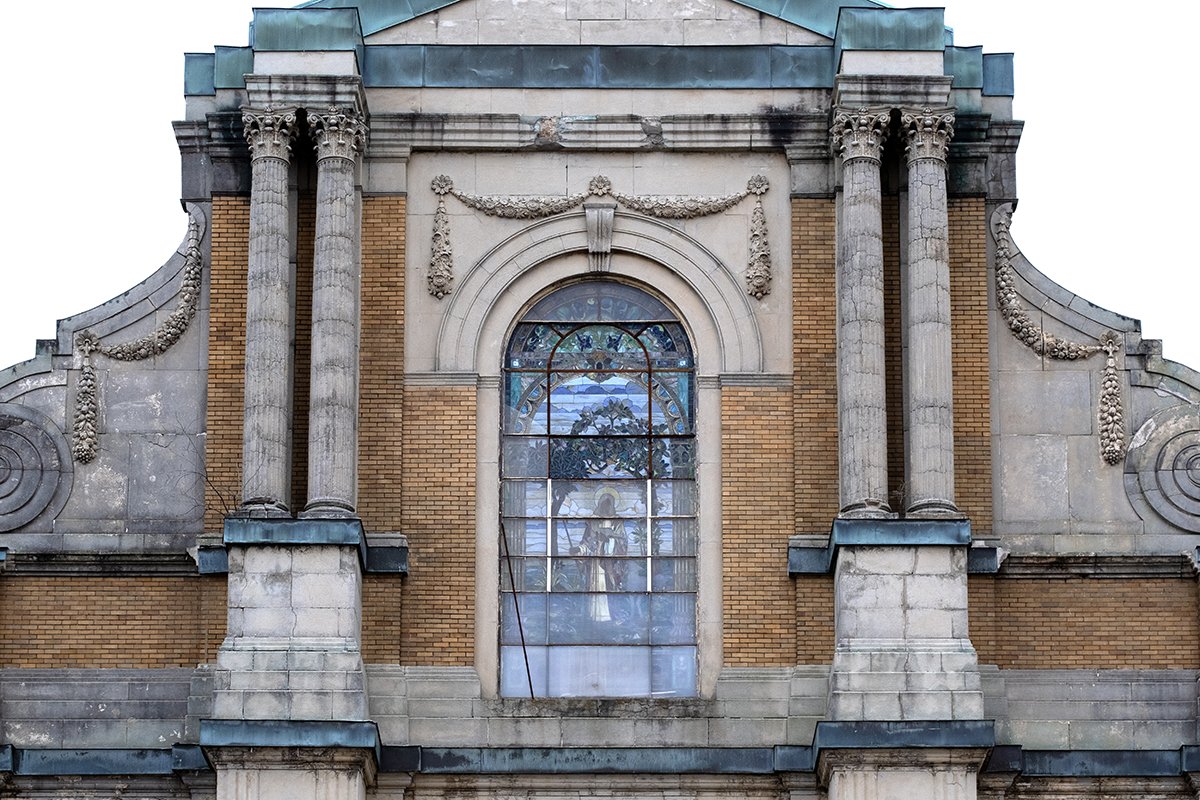
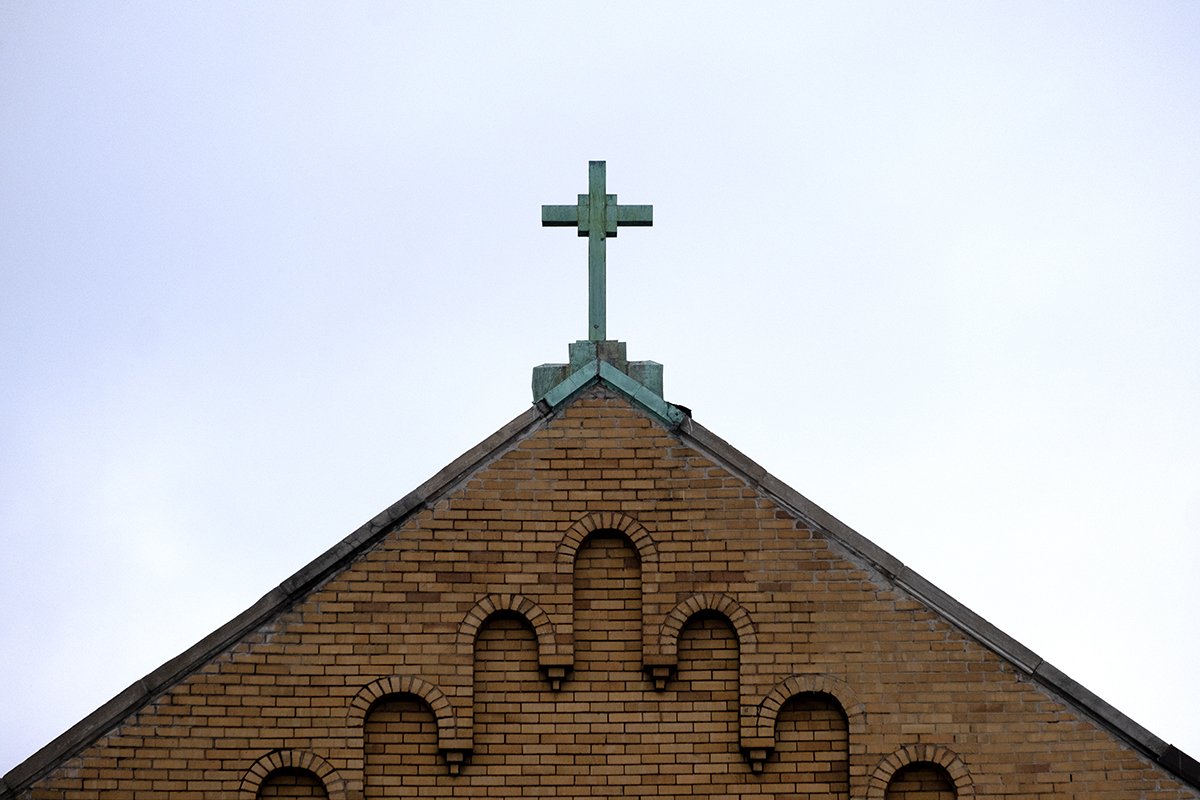

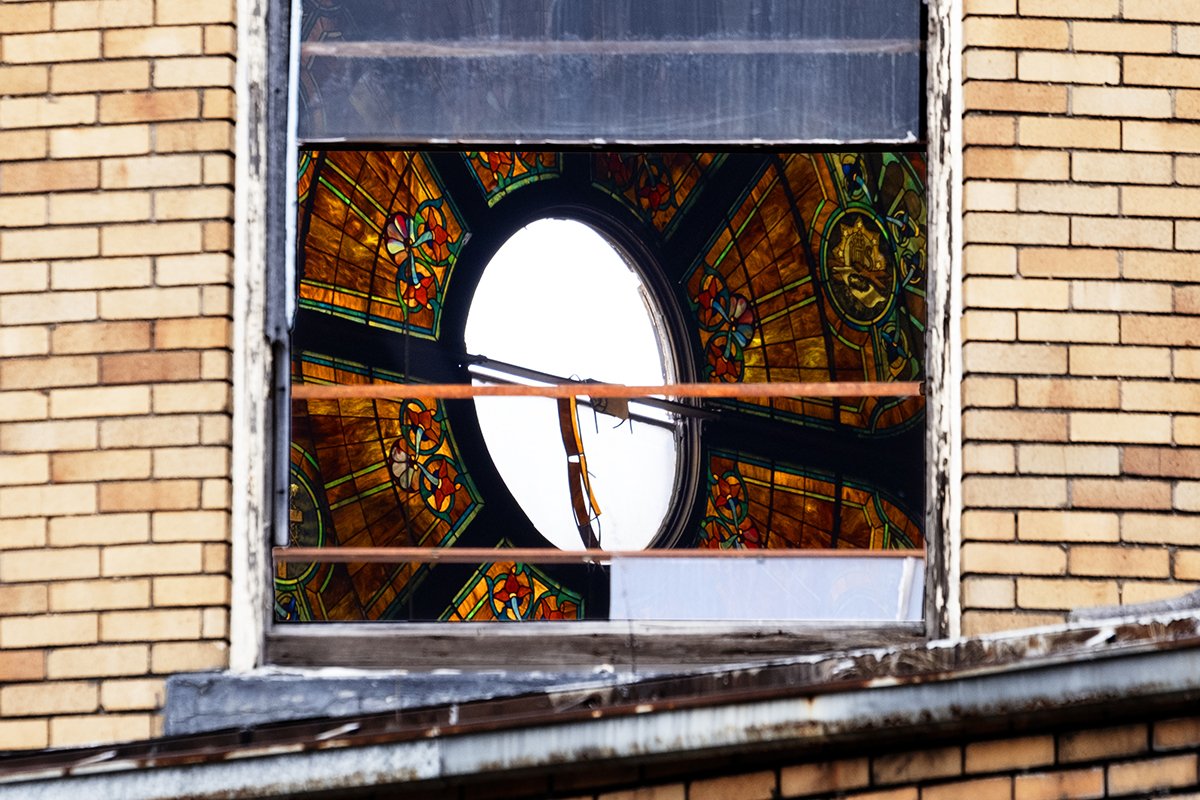

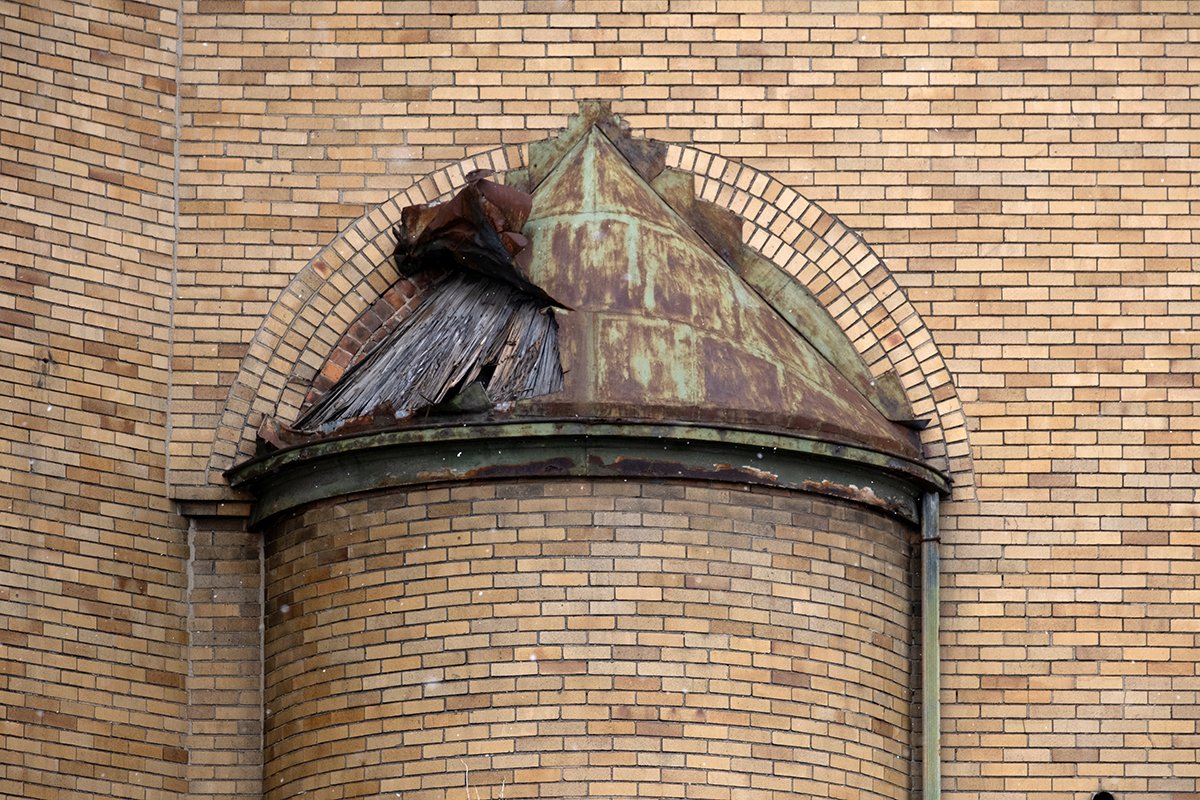
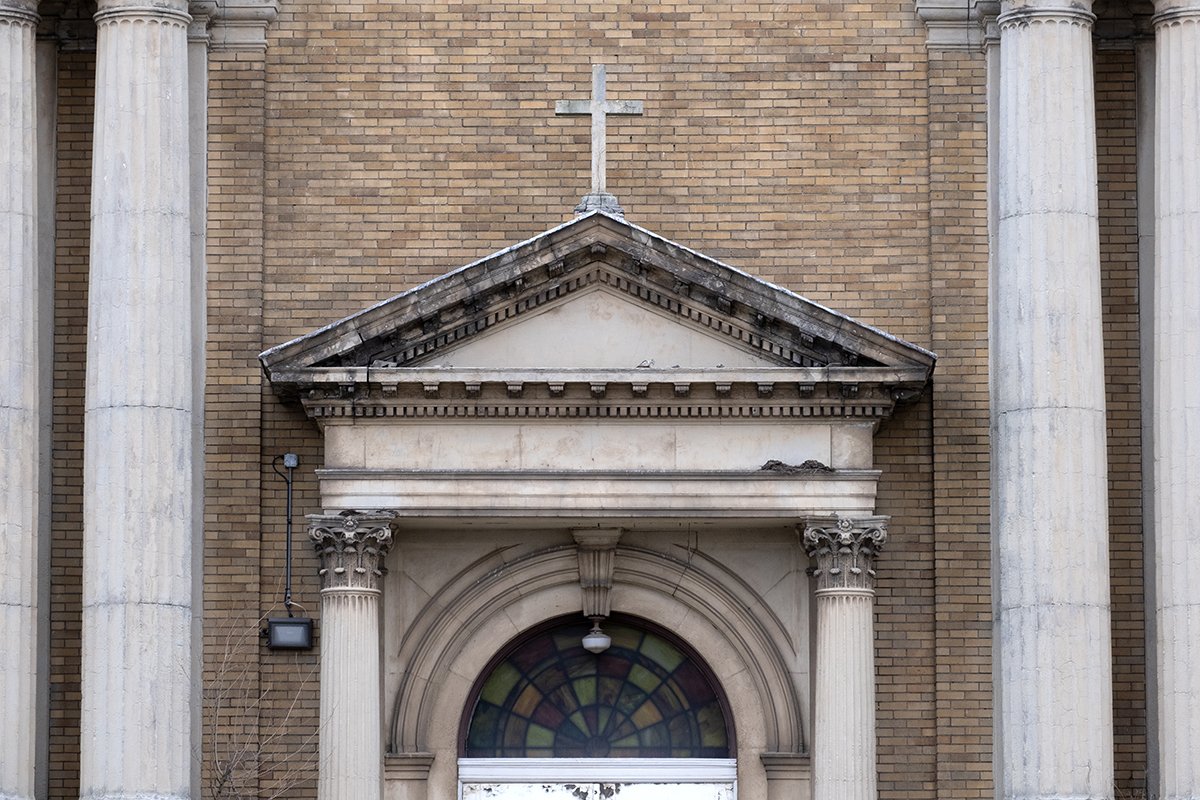
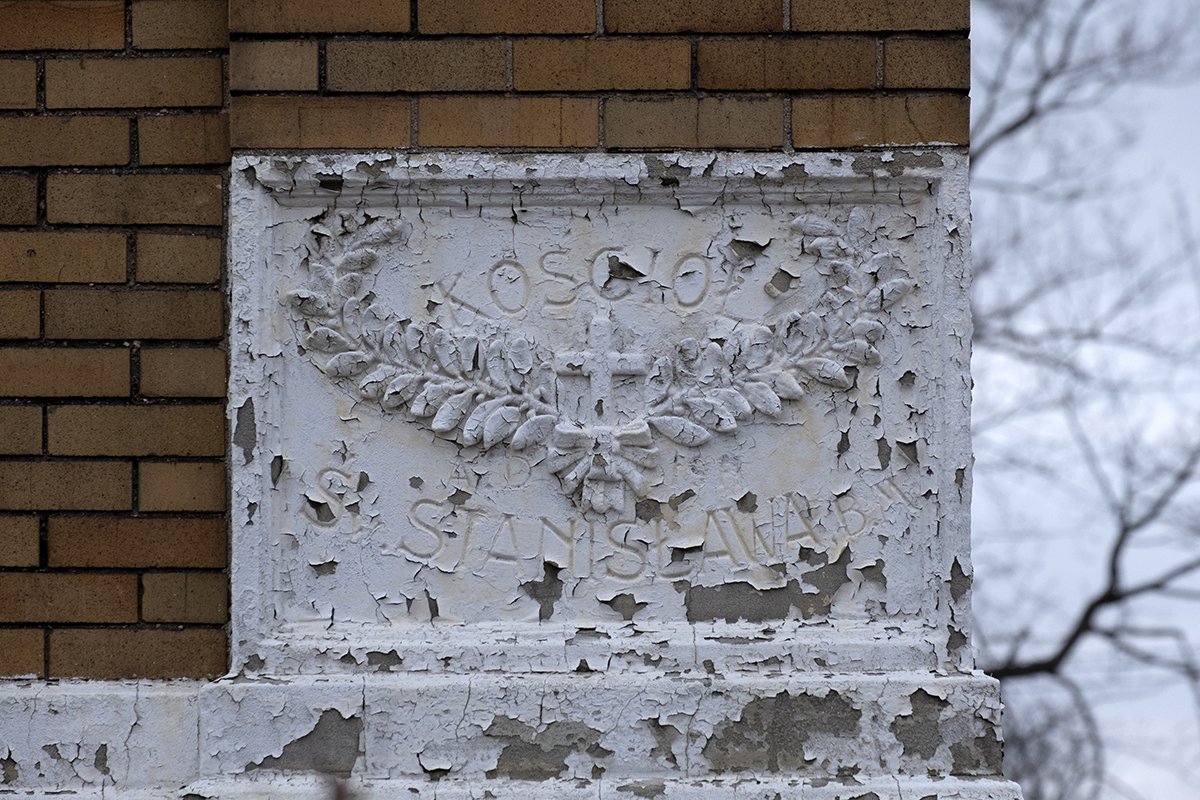
Details at St. Stanislaus
The cost to demolish such a large church would be massive, so it’s unlikely that the City of Detroit will attempt to do so unless they know that their costs will be returned, which is a positive for preservationists worried that it’ll come down.
Still, it’s a worry.
If the church stays in Castellano’s hands, the city must continue putting pressure on him to rehabilitate the property. Unlike some Detroit developers, Castellano doesn’t appear to want to see the structure demolished. He’s an architect and would not likely foot the bill for demolition himself. So, pressure (and blight tickets) from the city should push him to complete renovation work or sell the church to someone who will.
Castellano listed the property for $1,000,000 in late 2024, a price that was reduced to below $600,000 in mid-January 2025.
The church is still listed as a historic district through the City of Detroit. Whereas this does offer some protection, this doesn’t automatically save the church. It prevents Castellano from demolishing the church without approval; however, if the city wants it gone, they could make moves to see that happen. If the property is a safety hazard, it could be granted an emergency demolition, which trumps historic designation. Additionally, the property can be taken off the historic register, which is more challenging but not impossible.
Even without its fixtures, St. Stanislaus is worth saving.
The location is good, just a five-minute drive or 10-minute bike ride from the Detroit Institute of Arts and Midtown. Additionally, the church sits less than 500 feet from the proposed route of the Joe Louis Greenway, which is set to connect 23 Detroit neighborhoods, Hamtramck, and Highland Park.
St. Stanislaus is flanked by the Joe Louis Greenway and Chene Street
There are very few vestiges of the Polish neighborhood that once called this tract of land home. The demolition of St. Stanislaus Church would be historically and architecturally irresponsible and tone-deaf for what the surrounding neighborhood wants and needs.
January 22, 2025 Update
The church is currently listed for $595,000. It was previously listed for $1,000,000. The sale includes the church and the parking lot behind it where the rectory once stood.







